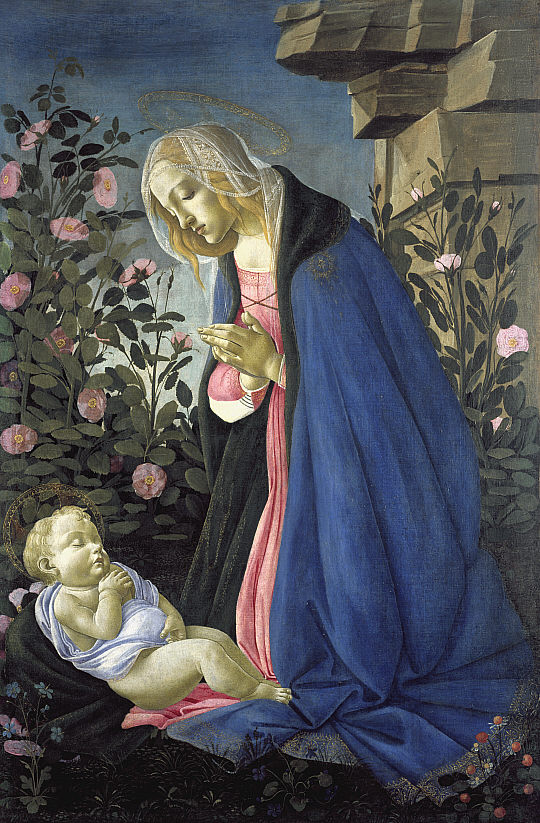On Christmas Eve the picture of choice is Sandro Botticelli’s infinitely tender and solemn Renaissance masterpiece, The Virgin Adoring the Sleeping Christ Child. The least well known of all the painter’s works, it has only just emerged from the obscurity into which it was unjustly plunged almost a century ago. That explains why it is mentioned in none of the standard works on Botticelli, although it is so plainly by the artist’s hand. Mary, with her prominent jutting chin, flowing hair and finely chiselled features, closely resembles other female saints and Virgins in Botticelli’s art (and also happens to be the spitting image of Venus in his most celebrated secular picture, The Birth of Venus). Her diaphanous head-dress, picked out with the tip of the brush in gold paint as fine as filigree, was an extremely fashionable garment in late fifteenth-century Florence, where Botticelli lived and worked. Like Filippo Lippi, who taught him, Botticelli was known for his ability to depict such wispy material. He was also known for his flower painting. The blooms surrounding the Madonna and child, which include a strawberry plant, sweet violet, and luxuriant bushes of thornless pink roses – alluding to the Virgin as “the rose without thorns” in the Song of Solomon – are as vigorous and delicate as any in fifteenth-century art.
Recently rediscovered, purchased earlier this year for the nation and now restored to almost its original, radiant condition, The Virgin Adoring the Sleeping Christ Child has been given pride of place in its new home, the National Gallery of Scotland. Representatives of the National Art Collections Fund, who spearheaded the drive to purchase the work from its Scottish owners, the Weamys Heirloom Trust, regard it as one of the most significant acquisitions made by any British museum in living...

ITP 36: The Virgin Adoring the Sleeping Christ Child, by Sandro Botticelli
24-12-2000

